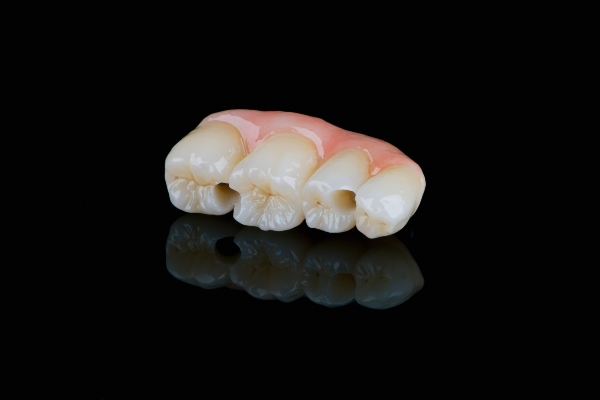 A dental bridge can fill your dental gap and restore your smile. Research shows that tooth loss is a common problem among adults. The dentist will discuss the different types of bridges with you on consultation day. Here are the different dental bridge types you should consider.
A dental bridge can fill your dental gap and restore your smile. Research shows that tooth loss is a common problem among adults. The dentist will discuss the different types of bridges with you on consultation day. Here are the different dental bridge types you should consider.
Maryland bonded bridge
There are no dental crowns necessary for this type of dental bridge. Instead, a metal framework supports itself. The dentist will stick or wrap a metal framework around the natural teeth. This treatment is ideal for people who do not want any changes to their teeth.
Traditional dental bridge
This type of bridge is the most common one. It has abutment teeth on both sides of the dental gap. The dentist will cement dental crowns over them to support the pontics. Healthy teeth can make this restoration effective. A traditional dental bridge may be invasive because of the significant removal of dental structures. This is necessary so that the dental crowns can fit over the abutment teeth.
Implant-supported bridge
Dental implants on both sides of the dental gap will support the dental bridge. This type of treatment can take much longer. The titanium rods need to fuse with the jawbone and dental implants first before the dentist installs the abutment and dental crown. The patient must have enough bone mass to support the titanium rods. A full dental assessment will determine if the patient is a good candidate for this type of dental bridge.
Cantilever bridge
This type of dental bridge uses one natural tooth to support the artificial tooth. These are more affordable and easier to install than the other types of bridges. One dental crown is all it needs for support. However, the single-tooth crown means that this dental bridge has weak support. This restoration is ideal for replacing front teeth.
Parts of a dental bridge
The dentist can replace at least one tooth with a dental bridge. Matching the color of the artificial teeth will help them blend with the neighboring natural teeth. Specific parts of a dental bridge contribute to its efficiency. Here are its basic parts:
- Pontics are the artificial teeth that fill the gap that was left by missing teeth.
- Abutments are supportive structures for the dental bridge. These are tiny connecting parts of implant-supported bridges.
The materials
A dental bridge is a synthetic tooth that relies on the surrounding teeth for support. This restoration is composed of a combination of ceramics, metals, and porcelain. The ceramic and porcelain are attached to the metal components. This design makes the bridge look visually pleasing. Research shows that most patients prefer this combination because it makes the dental bridge look more natural. The materials also make the bridge functional and stable, as well as secure and strong.
A specific type of dental bridge can meet a particular set of dental needs
Your dentist will explain each type of dental bridge along with their components. This will give the patient an idea of which of them can serve you the most. This type of dental restoration can help you reach your smile goals. Working with your dentist can help make your dental bridge stay in shape for many years.
Request an appointment or call Chesterfield Dentist at 804-412-0867 for an appointment in our Chester office.
Recent Posts
Dental bridges and dental crowns are wonderful, durable options to restore a smile. However, they are both employed for different reasons. By understanding the specifics of both, patients can learn which option is best for their needs when consulting with a dentist.Dental bridges are recommended after a tooth extraction, whether by trauma or professional intervention.…
Dental bridge placement will need two visits. The patient will go through a short process that will not be invasive at all. The result will improve the patient’s dental and general health. Knowing the placement process for this restoration can help prepare you for your next visit. Here is the placement process for a dental…
Both dental bridges and implants are popular, effective tooth replacement solutions. However, there are cases in which a general dentist may recommend a dental bridge over implants. This may be due to the number of teeth missing, their location, and the strength of the underlying jawbone, among other factors. Understanding how each of these treatments…


